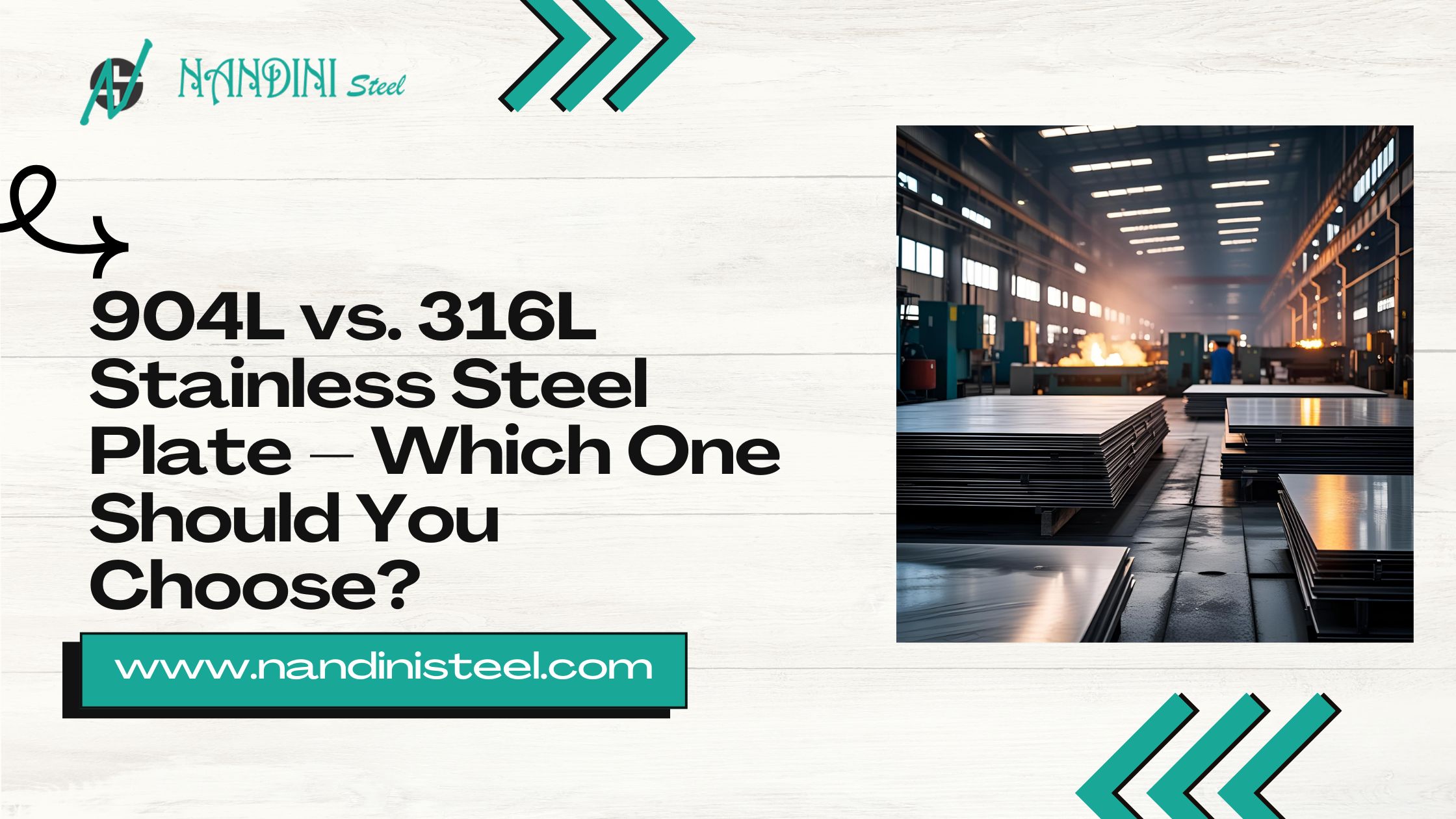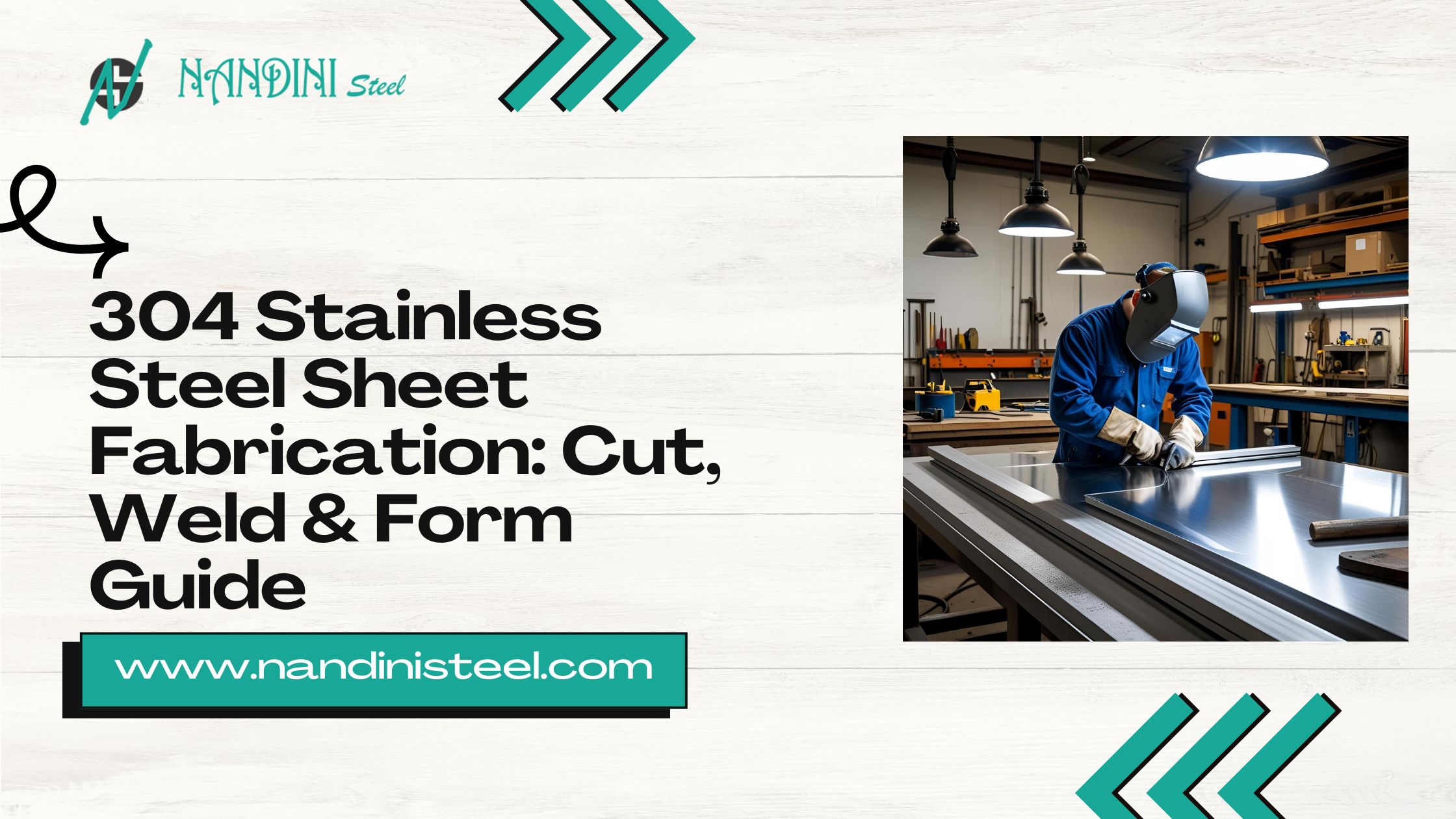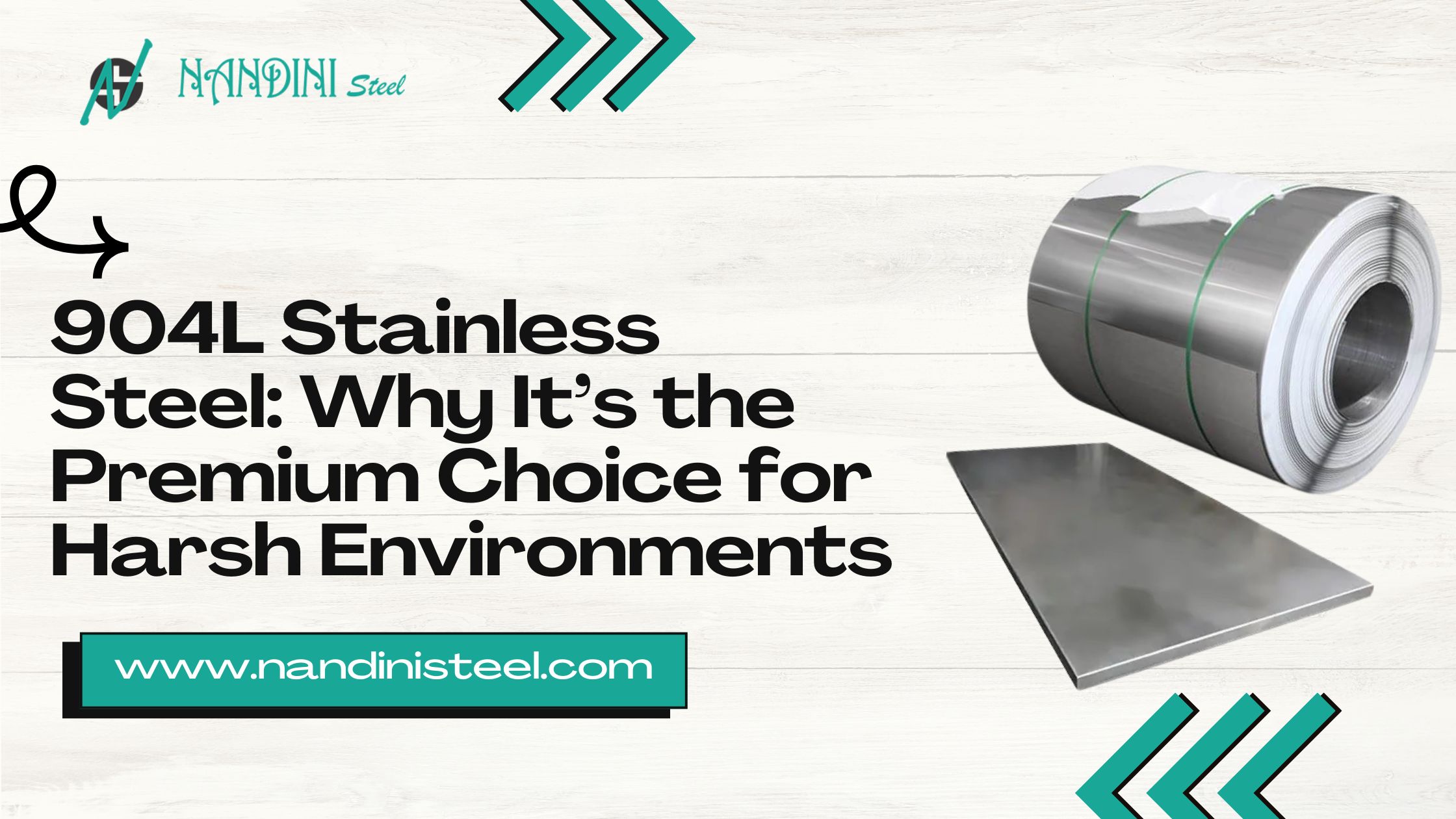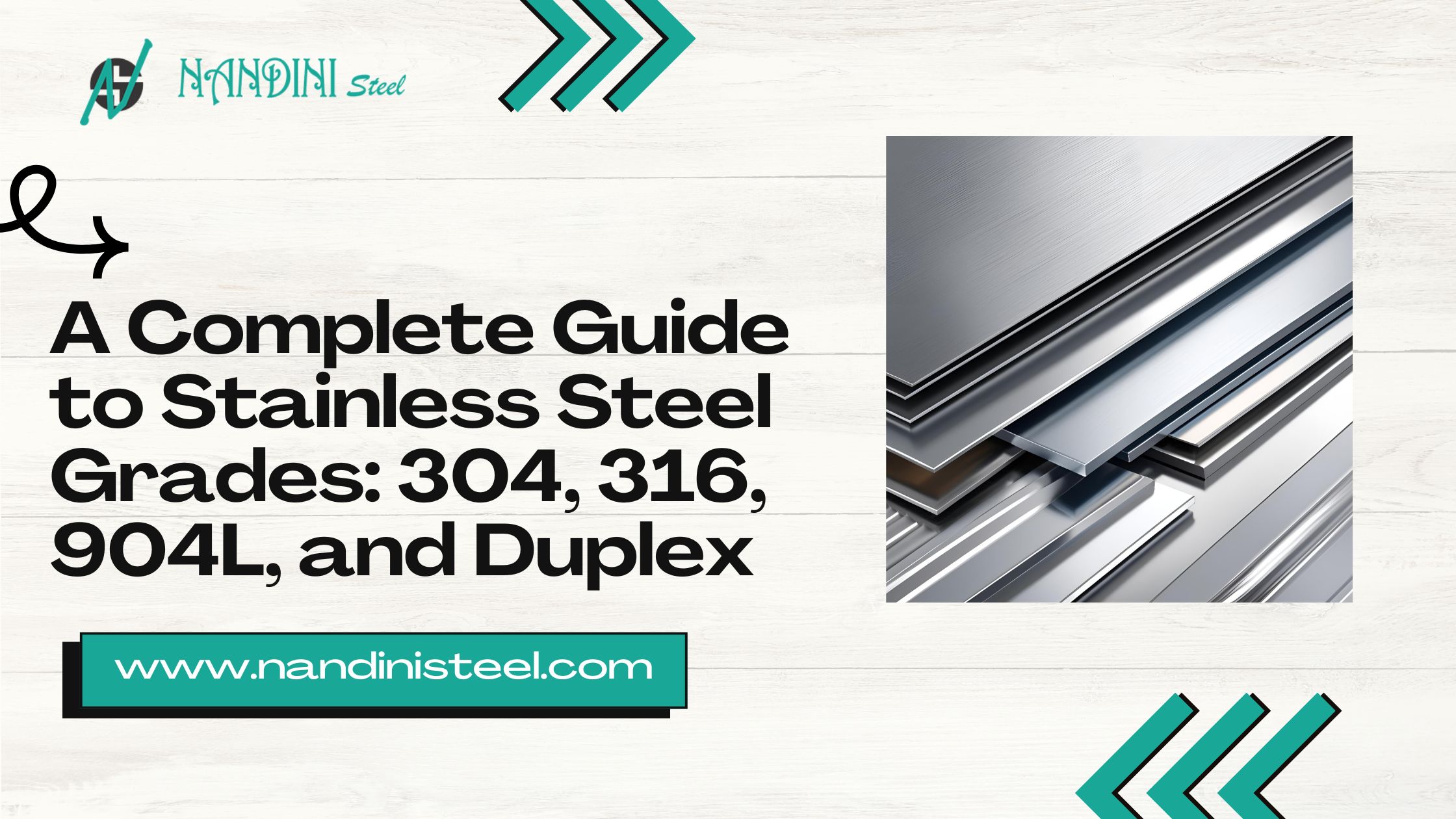Stainless steel is an important material in industrial applications, known for its exceptional strength, corrosion resistance and long-term reliability. Among the most widely used grades, 304, 316, 904L, and Duplex each offer distinct advantages customized to specific environments and performance needs. Sheets, plates, coils, pipes, flanges, and fittings used in a variety of industries, including construction, marine, chemical processing, and food production, frequently use these grades. To guarantee durability and effectiveness, it is essential to understand the variations in their composition, mechanical characteristics, and ability to withstand adverse environments. Based on functionality application and environmental requirements this blog explains these stainless steel grades to assist you in choosing the best choice.
What is Hot Rolled Stainless Steel?
Manufacturing Process:
Hot rolled stainless steel is manufactured through rolling steel slabs at temperatures in excess of 1100°C. This high temperature results in making the steel malleable and easily formable. Due to the rapid cooling, a scale layer develops on the surface. This is a natural component of the process that makes the steel textured.
Key Features:
Hot rolled stainless steel offers good ductility, which means it can bend and stretch without breaking. It doesn’t have tight size accuracy, but it’s easier to handle when making large or thick parts. It is usually employed in the shape of heavy plates or broad coils. When the surface is cleaned it’s suitable for welding, cutting and forming.
Surface Condition:
The hot rolled stainless steel surface is typically dull and blue-grey in color. This is due to the oxide layer that forms during cooling. For applications where appearance matters, the steel must go through pickling or shot blasting to remove the scale and improve the finish.
What is Cold Rolled Stainless Steel?
Manufacturing Process:
Cold rolled stainless steel is made by rolling hot rolled steel again, but this time at or near room temperature. This second phase enhances the strength and provides a smoother surface. The steel undergoes annealing, a thermal treatment that softens it after rolling followed by a light roll called skin pass. These additional steps enhance the surface quality and ready the steel for ultimate use.
Key Features:
Cold rolled stainless steel possesses greater yield strength due to the work hardening during rolling. It also provides tighter thickness and width control, which makes it suitable for usage where precision is crucial. It finds maximum use in thin sheets or coils for detailed or decorative components.
Surface Condition:
The surface of cold rolled stainless steel is clean, smooth, and often reflective. It is available in several finishes like 2B (matte), BA (bright annealed), No.4 (brushed), and Mirror. These finishes make it suitable for products that are visible or need a polished look.
In-Depth Comparison – Cold Rolled vs Hot Rolled
The table below highlights the key differences between cold rolled and hot rolled stainless steel across various important properties and applications.
| Property | Hot Rolled Stainless Steel | Cold Rolled Stainless Steel |
| Rolling Temperature | Above recrystallization point | Room temperature |
| Surface Finish | Scaled, dull | Smooth, polished (2B/BA) |
| Dimensional Tolerance | Looser | Tighter tolerance |
| Strength (Yield) | Moderate | High (due to strain hardening) |
| Thickness Range | 3 mm to 150 mm (common in plates) | 0.3 mm to 6 mm (sheets/coils) |
| Available Forms | Plates, coils, flat bars | Sheets, coils, decorative sheets |
| Price Point | Lower | Slightly higher |
| Typical Grades | 304, 316, 321, 310S | 304, 316L, 430, 409, 441 |
Advantages of Hot Rolled Stainless Steel
- Lower cost due to simpler processing: The hot rolling process is straightforward and uses less energy in finishing. This keeps the production cost lower.
- Faster production speed for bulk quantity: Hot rolling allows larger volumes to be made quickly, making it ideal for high-quantity needs.
- Easier to work with for thick structural forms: Thick sections are easier to roll and shape at high temperatures, making fabrication simpler.
- Excellent for welding after descaling: After removing the surface scale the steel welds and maintains strength.
- Can be fabricated into structural beams, pressure vessels, large tanks: Hot rolled steel’s thickness and strength make it appropriate for heavy-duty industrial components.
Advantages of Cold Rolled Stainless Steel
- Perfect for aesthetic and high-precision applications: Cold rolled steel provides a clean, smooth surface and close size control. It’s perfect for parts visible or require exact dimension.
- Stronger due to work hardening process: Room temperature rolling enhances the strength of the steel. This assists in the production of long lasting and hard parts.
- Ready-to-use finish (2B, No.4, BA, Mirror) – saves polishing time: The surface appears smooth and reflective. In most cases, additional polishing is not required prior to use.
- Ideal for bending, cutting, stamping, and presswork: Its uniform thickness and surface finish are ideal for shaping into intricate details and components.
- Preferred in kitchen equipment, elevators, architecture, pharma interiors: Its clean look and hygienic surface make it suitable for places that require both function and finish.
Real-World Applications
Hot Rolled Stainless Steel Use Cases:
Hot rolled stainless steel is used in heavy equipment where strength and thickness are key. It’s widely used for oil and gas pressure vessels, due to its durability in harsh environments. Steel bridges, structural I-beams, and shipbuilding components depend upon its strength and formability. It is also used in marine tanks and coaches of the railway, where massive-load carrying members need to be fabricated.
Cold Rolled Stainless Steel Use Cases:
Cold rolled stainless steel is found in everyday spaces that require both appearance and hygiene. Kitchen counters, chimneys, and lift panels benefit from its smooth, polished surface. It’s widely used in pharma and cleanroom cladding for its clean finish and corrosion resistance. In the auto sector, it is used in exhaust trims and precision brackets. Hospitals prefer it for surgical trays and furniture. It also appears in decorative interior features like mirror panels and ceiling tiles.
Stainless Steel Product Forms at Nandini Steel
Hot Rolled Stainless Steel Products:
We supply hot rolled sheets in grades like 304, 316, and Duplex for general and industrial use. Our hot rolled plates are ideal for tanks, structural foundations, and high pressure work. Hot rolled coils come in custom widths for further processing or fabrication.
Cold Rolled Stainless Steel Products:
We provide cold rolled sheets between 0.5 mm and 6 mm with 2B, BA, and No.4 finishes. These are ideal for kitchen, pharma, and architectural uses. Cold rolled coils are widely used in forming and stamping applications. For decorative and high-precision projects, our cold rolled mirror sheets deliver a sharp, polished look.
How to Choose the Right Rolling Type for Your Needs
If your project needs structural strength at a lower cost, hot rolled is the right fit. For precise work demanding a smooth finish and exact sizing use cold rolled. If you intend to weld or shape large sections, hot rolled is more adaptable. For products finished and exposed or utilized in clean environments, cold rolled steel is superior.
Common Myths About Cold vs Hot Rolled Steel
Cold rolled steel does not imply that it can withstand cold temperatures it merely describes how it is processed. Hot rolled is not substandard. It simply fulfills other requirements. Cold rolled isn’t necessarily the greatest option; it all depends on the job, the conditions, and the intended application.
Conclusion
Hot rolled and cold rolled stainless steel both have their use. Hot rolled offers bulk strength and economy. Cold rolled provides precision and shine. Selecting the correct one helps enhance performance, reduce cost, and meet the requirement of the job. Nandini Steel provides both, with quality inspection, top-grade certifications, and custom cuts to your specification.






